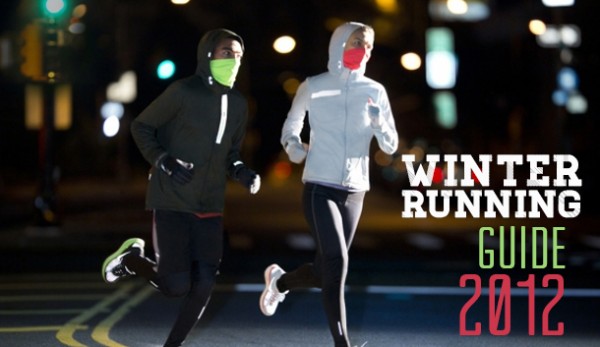Well, I hate to admit it but it’s getting colder outside and that means winter is near. It’s time to throw on the extra layers and adapt to the cold air, chilling winds and icy conditions of winter running. Winter is not the friendliest of seasons for runners but that doesn’t mean that you have to give up your morning 5k runs and hibernate indoors. I usually fall behind with my training in the winter, and if you’re a Torontonian like me, those months can seem very long and dreary.
Winter running requires a bit more planning and preparation than running during spring or summer. However, don’t be intimidated by the sub-zero temperatures that the winters bring us. With this guide, you will be better prepared to battle the winter elements and get ready for those spring/summer events next year. For those of you who are new to winter running – pay close attention – this guide is for you.
Warm-up.
Before you start your run, stretching is always ideal. However, during the winter, you should always give yourself an extra 5–10 minute warm-up indoors to get your body temperature up. If you’re a morning runner like me, your muscles are already shorter and colder because they’ve been at rest over night. To avoid cramping, loosen up your muscles with a few minutes of stretching and jumping jacks before hitting the trails.
I would also advise getting some proper running gear to protect your self from the cold.
I purchase some of my winter running gear at my local Running Room store. (http://www.shop.runningroom.com/) They have a great selection of running gloves, caps and compression pants and shirts that help keep your muscles tight and body warm. A wind reflective jacket is also advisable during the winter.
Plan your route.
Mapping out a familiar route ahead of time is always a good idea, especially if you’re pressed for time. The last thing you want is to be 10km out in the middle of nowhere.
You can use a variety of applications to plan your running route. I’ve been tracking my runs and planning out my routes for the past 6 years using Nike’s Nikeplus GPS app (http://nikeplus.nike.com/) on my iPhone. The app is also available on a number of Apple devices and is also available on Android enabled devices… and by the way, the app is free.
There are many other tracking and mapping apps that can help you plan out your runs such as, Endomondo (http://www.endomondo.com/), and RunKeeper (http://runkeeper.com). If you’re not an app person, jumping online and planning out your route with Google maps is always an option.
Stay hydrated.
Just because it’s not 28 degrees and sunny outside, doesn’t mean that you don’t need to stay hydrated. As long as you’re perspiring, you need to be hydrated. You may not need to carry as much fluid as you do in the summer months but it’s still necessary. I would suggest filling your water bottle with warmer water rather than cold. It will slowly get colder while you are out on your run.
Slow and steady.
When running on snowy and icy surfaces, you should run at slower speeds. Consider shortening your stride and slowing down your pace. You want to reduce the risk of slipping and falling, which could cause you to sprain or pull a muscle. The cold air is also denser during the winter months. So, running fast will cause you to take in a lot of cold air. It can be a bit uncomfortable at times so, I choose to run at a comfortable pace so that I’m not panting for air as much as I do during the spring or summer. Slowing down your pace will also make you more aware of ice patches and allows you to have enough time to react and avoid them.
If you decide to go out for a run on a windy day, take my advice and start your run by going against the wind rather than with it. This will save you from having to deal with chilling winds on your way back from your run. Chances are, after a long run, you’re legs will be a bit tired. So, that extra wind will pose a challenge to you and you will feel the effects of freezing a bit more as the wind hits you.
Pick your Kicks.
If you plan on running in snowy or slushy conditions, consider getting a pair of trail shoes that provide better grip. There are many other types of shoes that are made specifically for winter running. I’ve provided a link to some of them below. Recently, Nike introduced their “Hyper Shield” lineup. Hopefully, in the next couple of weeks, I will purchase a pair and see how well they hold up this winter.
httpvh://youtu.be/MxcDWhD-y4k
2012 Winter Running Shoe Guide:
http://fitbie.msn.com/slideshow/2012-winter-running-shoe-guide/slide/1
The Treadmill
Now I know this is a guide for running outdoors in the winter but when it gets really rough outside and the temperature drops to -15 degrees, the last thing you want to do is play super-hero and tackle a 10km run in a snow storm. There’s nothing wrong with hopping on your treadmill or going to your local fitness center to get in a quick run. A treadmill is convenient and even though it’s not the same as running freely outdoors, you will get a better, safer workout on the days where extreme weather prohibits you from going outside.
Previously posted on SportsTok
 Tek Tok Canada Canadian Technology News & Reviews
Tek Tok Canada Canadian Technology News & Reviews

